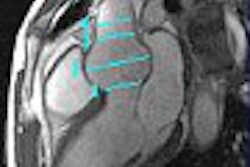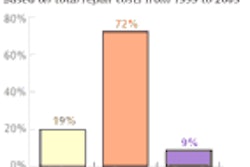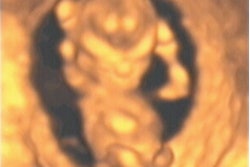Emergency physicians are getting better at performing ultrasound at U.S. academic medical centers, according to research published in the April issue of the Journal of Ultrasound in Medicine. But while the number of emergency medicine residency programs meeting specialty-specific guidelines has more than doubled in the last four years, only a small number are meeting American Institute of Ultrasound in Medicine (AIUM) guidelines.
To determine the current state of emergency physician-performed ultrasound (EPPUS), researchers from Yale University School of Medicine in New Haven, CT, and Resurrection Medical Center Emergency Medicine Residency in Chicago conducted a 10-question Web-based survey to ultrasound/residency directors at 122 emergency medicine residency programs in the U.S. (JUM, April 2004, Vol. 23:4, pp. 459-466).
The survey was sent out in the spring of 2002 and produced an 84% response rate (104 of 122 programs). Of the responding programs, 92% reported the availability of 24-hour emergency physician-performed ultrasound. At two locations, EPPUS was available sometimes. All six of the facilities that did not have 24-hour EPPUS availability said they planned to obtain a system for EPPUS within one year, according to the researchers.
Focused assessment with sonography in trauma (FAST) was the most frequent examination performed, in 95% of programs. Other examinations included abdominal aorta (80%), transabdominal obstetric (78%), medical arrest (77%), biliary (65%), transvaginal obstetric (59%), renal (45%), echocardiography (44%), procedural (36%), deep venous thrombosis (15%), and other (8%).
Fifty-one percent of respondents had a credentialing/privileging program in place at their hospital, with 24% following American College of Emergency Physicians (ACEP) guidelines. Nine percent had a global program and 19% had an application-specific policy that differs from the ACEP guidelines. Of the respondents reporting a policy in place, 44% reported that fewer than 20% of attending physicians had privileges/credentials, and 37% said that more than 80% of attending physicians had privileges/credentials.
Seventy-one percent reported having a quality assurance/image review procedure, with 75% of these sites employing still images while 25% utilized moving images. Four programs (4%) indicated that a radiologist reviewed their scans, with the remainder reporting that an emergency physician reviewed the scans.
A dedicated emergency physician ultrasound director/coordinator was in place at 81% of programs. Sixteen programs (16%) reported that they were billing for EPPUS in at least one application, with an average of 5.5 applications. The most commonly billed applications included trauma/FAST examination (88%), abdominal aorta (69%), and first-trimester pregnancy (75%).
Of those not billing, 10 (12%) reported that they planned to begin billing within one year, and 32 (37%) reported that they planned to bill at some point in the future, the researchers noted. Forty-one percent of programs reported no plans to bill.
As for didactic instruction, 19% of programs provided less than 10 hours, with 22% providing more than 40 hours. Rotations in ultrasound were required in 25% of programs, with 36% offering an elective in EPPUS.
Emergency medicine residents performed ultrasound examinations independently on ED rotations in 44% of programs, while 47% reported that exams were performed with an attending physician presence. Eight percent said that EM residents did not perform ultrasound during ED rotations.
The requirements for adequate training of performance and ultrasound remain controversial, with different societies recommending different requirements, the authors noted.
"Our results show that 39% of residencies are completing at least the 150 examinations recommended by the ACEP, and 22% of programs are providing at least the 40 hours of didactic instruction recommended by the SAEM (Society of Academic Emergency Medicine)," they wrote. "Fewer than 15% of residencies reported completing the 300 examinations recommended by the AIUM. Although a small number of residencies are meeting ACEP and SAEM guidelines, the percentage has increased significantly from 1999, when only 16% of graduating residents were completing at least 150 examinations and only 8% of programs provided more than 40 hours of didactic instruction."
By Erik L. RidleyAuntMinnie.com staff writer
March 29, 2004
Related Reading
Affordable equipment accelerates ultrasound proliferation, January 26, 2004
Medicare database shows cardiologists driving up imaging costs, January 9, 2004
Non-radiologists outpace radiologists in skyrocketing use of ultrasound, December 1, 2003
Radiologists and surgeons fractured over vertebroplasty vs. kyphoplasty, November 18, 2003
Musculoskeletal ultrasound on the rise, may yield cost savings, January 31, 2003
Copyright © 2004 AuntMinnie.com




















